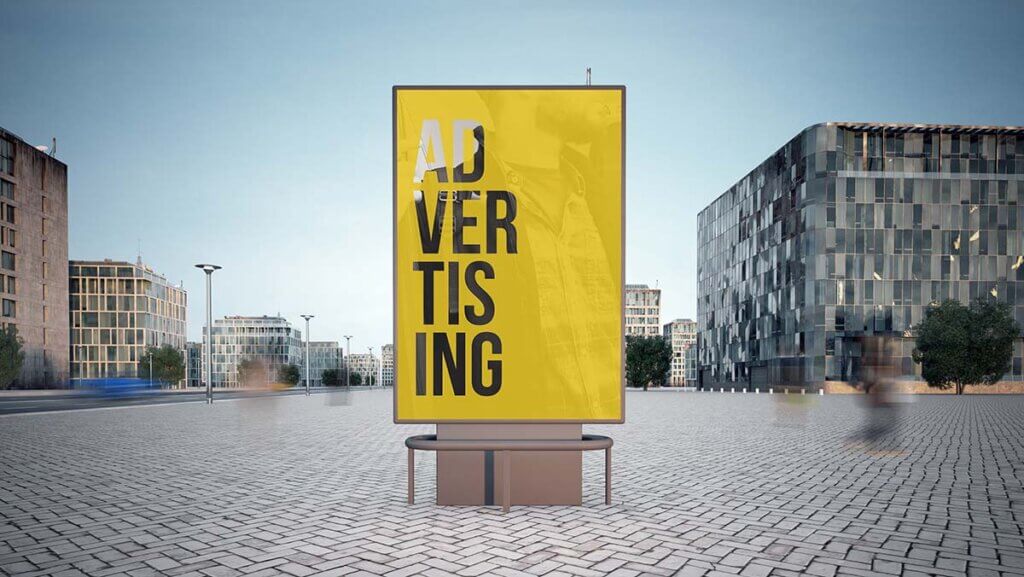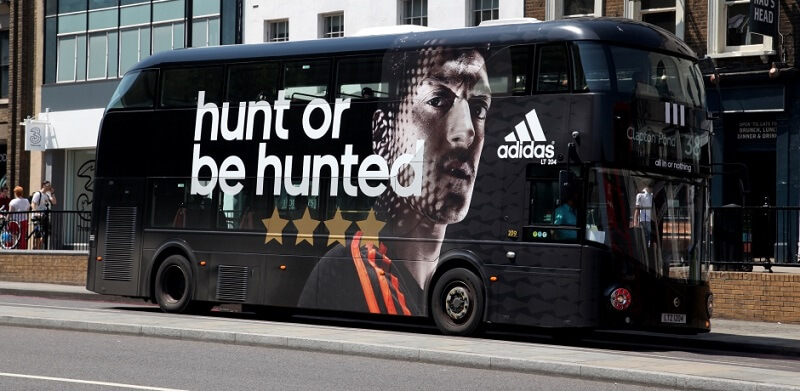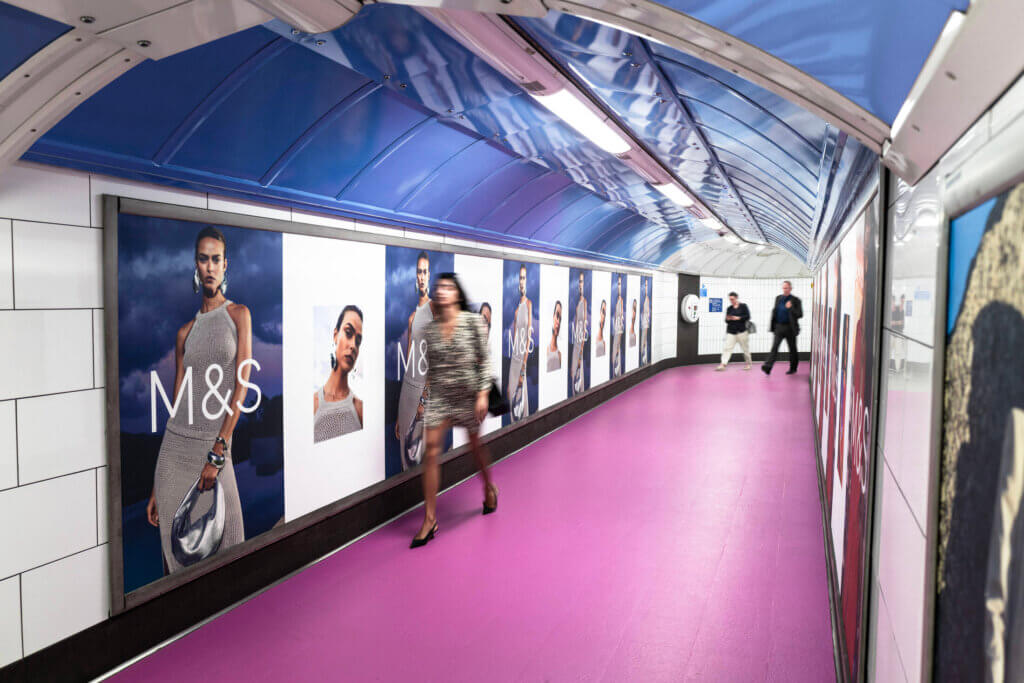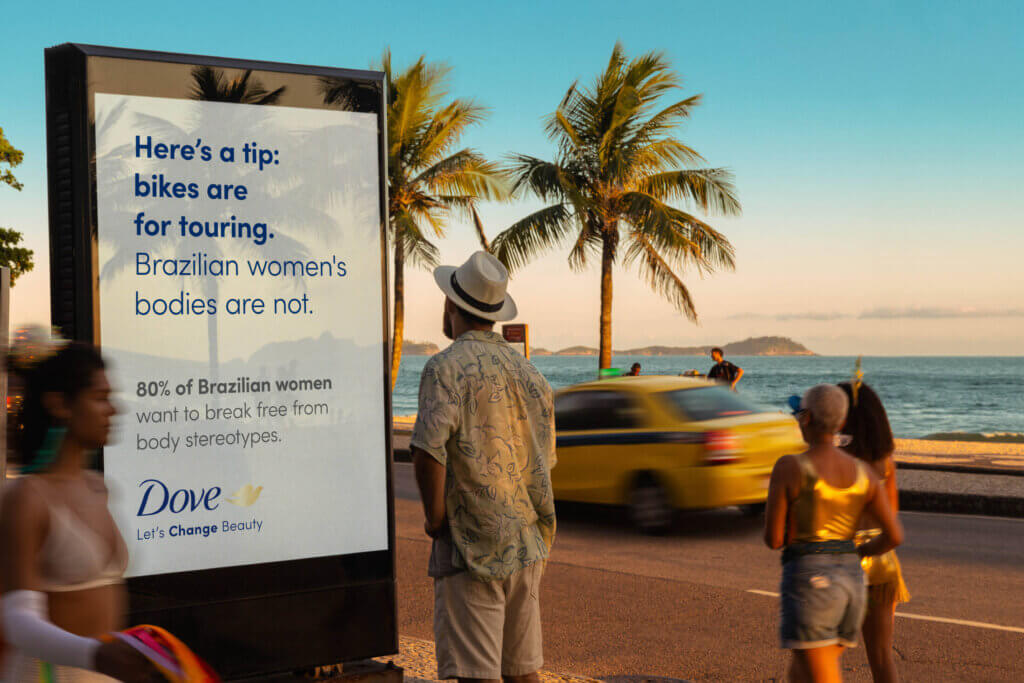In today’s fast-paced, digitally-driven world, capturing consumer attention can be challenging. Amid the clutter of online advertisements and the diminishing returns of traditional media, out-of-home (OOH) advertising offers a powerful alternative. Whether you’re an established brand or a burgeoning business looking to expand your reach, OOH advertising offers an effective way to achieve national exposure. This form of advertising, which includes billboards, transit ads, street furniture, and digital displays, offers unique benefits that digital alone cannot provide.
This blog will delve into the world of OOH advertising, exploring its benefits, strategies for implementation, and future trends, providing you with the knowledge to harness its full potential for your brand.

Understanding Out-Of-Home Advertising
Out-of-home advertising encompasses all forms of advertising that reach consumers while they are outside their homes. This includes static and digital billboards, transit advertising (such as ads on buses, trains, and subways), street furniture (such as bus shelters and kiosks), and place-based media (such as ads in airports, malls, and sports arenas). OOH advertising stands out because it engages with consumers in real-world settings, capturing their attention in ways digital ads can’t always achieve.
Types of OOH Advertising
Traditional Billboards:
Billboards are perhaps the most iconic form of OOH advertising. They are large, eye-catching, and strategically placed to maximize visibility. Billboards are highly effective for building brand awareness due to their size and prominence. They can reach a wide audience, making them ideal for campaigns that require broad visibility. The creative possibilities with billboards are vast, allowing for bold and memorable advertising that can make a significant impact on consumers.
Transit Advertising:
Transit advertising leverages public transportation systems to deliver ads to commuters. This type includes advertisements on vehicles, in stations, and at transit stops. Transit advertising offers high-frequency exposure, as commuters encounter the same ads repeatedly. It is particularly effective in urban areas with heavy public transportation use. The diverse formats allow for creative executions that can capture attention in various settings.

Digital OOH
Digital OOH encompasses electronic displays and interactive screens found in public spaces. These ads leverage technology to offer dynamic and engaging content. Digital OOH advertising offers dynamic and flexible content delivery. Ads can be updated in real-time, allowing for timely and relevant messaging. The interactive nature of some Digital OOH formats enhances engagement and provides a more immersive experience for consumers. The data capabilities also enable better measurement and targeting, improving the overall effectiveness of campaigns.
Truck Advertising
Truck advertising is a mobile form of OOH that places ads on trucks and other commercial vehicles. These moving billboards can reach a wide and diverse audience as they travel through different areas. Truck advertising offers the unique benefit of mobility, allowing brands to reach audiences in various locations throughout the day. This type of advertising can target specific areas during peak times, such as rush hours or special events. The constant movement ensures high visibility and repeated exposure, making it an effective tool for creating widespread awareness and engagement.
Street Furniture
Street furniture advertising utilizes urban infrastructure to display ads. This includes public amenities such as bus shelters, benches, and newsstands. Street furniture ads offer proximity to pedestrians, making them highly visible and engaging. They are ideal for targeting urban dwellers and commuters, providing frequent and close-range exposure. This type of advertising often integrates well with the urban landscape, enhancing the overall aesthetic while delivering the brand message.

The Advantages of OOH Advertising for National Exposure
- Wide Reach and High Visibility
OOH advertising offers unparalleled reach, exposing your brand to a vast audience. Billboards and transit ads, for example, are seen by millions of people daily as they commute, shop, or travel. This high visibility ensures that your message reaches a diverse demographic, from urban dwellers to suburban commuters.
- Enhanced Brand Recall
Research consistently shows that OOH advertising enhances brand recall. The repetitive exposure in everyday environments helps embed the brand message in the minds of consumers. Unlike digital ads that can be skipped or ignored, OOH ads maintain a constant presence, making it more likely that consumers will remember your brand when making purchasing decisions.
- Geo-targeting Flexibility
OOH advertising allows for precise targeting based on location. Whether you want to reach young professionals in a bustling city center or families in suburban areas, OOH ads can be strategically placed to target specific demographics. Additionally, digital OOH ads can be programmed to display different messages at different times of the day, further enhancing targeting capabilities.
- Complementary to Digital Campaigns
OOH advertising works synergistically with digital marketing campaigns. Integrating OOH with social media and online advertising amplifies the reach and impact of your marketing efforts. For instance, a QR code on a billboard can drive traffic to your website or social media page, bridging the gap between offline and online engagement.
- Creative Impact
OOH advertising offers unparalleled creative possibilities. From visually stunning billboards to interactive digital displays, the medium allows brands to think outside the box and create memorable, attention-grabbing campaigns. Creative OOH ads often generate social media buzz, further extending their reach and impact.
Integrating OOH Advertising into Your Marketing Strategy
To maximize the effectiveness of OOH advertising, it is crucial to integrate it with other marketing channels. Here are some strategies for doing so:
1. Define Your Objectives
Define what you aim to achieve with your OOH campaign. Whether it’s building brand awareness, launching a new product, or driving traffic to your website, clear objectives will shape your strategy and metrics for success.
2. Understand Your Audience
Conduct thorough research to understand your target audience’s demographics, behaviors, and preferences. Knowing where your audience spends their time and what catches their attention is crucial for selecting the right OOH formats and locations.
3. Choose Strategic Locations
Location is key in OOH advertising. Select high-traffic areas that are frequented by your target audience. Consider the context and environment of each location to ensure your ad stands out and resonates with viewers. Urban centers, busy highways, transit hubs, and popular landmarks are prime spots for maximum exposure.
4. Design Compelling Creative
The creative design of your OOH ad is critical in capturing attention and conveying your message. Use bold visuals, striking colors, and concise text to make an immediate impact. Since OOH ads are often viewed in passing, ensure your message is clear and easy to understand at a glance. For digital OOH, leverage dynamic content and interactive elements to engage viewers.
5. Consistent Branding
Ensure that your OOH advertisements align with your overall branding and messaging. Consistent visual and verbal elements across all marketing channels help reinforce brand identity and recognition.
6. Integrate with Other Marketing Channels
For a cohesive and powerful brand presence, integrate your OOH campaign with other marketing channels. Use consistent branding and messaging across OOH, digital ads, social media, and traditional media. Cross-channel promotion can amplify your reach and enhance the overall effectiveness of your campaign.
7. Measure and Optimize
Track the performance of your OOH campaign using key metrics such as impressions, engagement, and conversion rates. Digital OOH provides real-time data that can be used to adjust and optimize your campaign. Regular monitoring and analysis will help you understand what works and what doesn’t, allowing for continuous improvement.
Innovations in Out-of-Home Advertising
In today’s rapidly evolving advertising landscape, Out-of-Home (OOH) advertising is undergoing a transformation driven by cutting-edge innovations. These advancements are redefining how brands connect with their audiences in the physical world, creating more dynamic, interactive, and impactful campaigns.
1. Programmatic Advertising
Programmatic advertising has introduced a new level of efficiency and precision to OOH advertising, similar to what has been achieved in the digital advertising space. This technology automates the ad purchasing process, allowing for real-time bidding and placement of ads based on data-driven decisions. With programmatic buying, advertisers can target specific demographics, locations, and times, ensuring their ads reach the most relevant audiences. Additionally, real-time optimization and detailed performance analytics enable continuous improvement of campaigns, maximizing their impact and ROI.
2. Integration of Augmented Reality (AR) and Virtual Reality (VR)
Augmented Reality (AR) and Virtual Reality (VR) are revolutionizing OOH advertising by adding immersive and interactive dimensions to traditional static ads. AR technology can turn a regular billboard into an interactive experience where passersby can use their smartphones to engage with the ad, seeing additional content or participating in interactive games. VR installations in places like shopping malls or public squares can create fully immersive brand experiences, transporting consumers into virtual worlds where they can interact with products in new and exciting ways.
3. Data Analytics and Consumer Insights
The integration of advanced data analytics into OOH advertising provides deep insights into consumer behaviors and campaign performance. Sensors and mobile data can track the movement and demographics of people passing by OOH ads, offering valuable data on who is viewing the ads and their engagement levels. This information allows advertisers to tailor their campaigns more precisely and measure their effectiveness, enabling continuous improvement. By leveraging these insights, brands can optimize their OOH strategies to better target their audience and enhance overall campaign performance.
4. Sustainability in OOH Advertising
As sustainability becomes a key consideration in all areas of business, OOH advertising is embracing eco-friendly innovations to reduce its environmental impact. Advertisers are increasingly using recyclable and biodegradable materials for billboards and posters, while solar-powered digital billboards reduce reliance on traditional energy sources. Additionally, green advertising spaces incorporating living walls not only enhance the visual appeal of ads but also contribute to urban greening efforts. These sustainable practices not only minimize the environmental footprint of OOH campaigns but also resonate with environmentally conscious consumers.
5. Mobile and Social Media Integration
Modern OOH advertising seamlessly integrates with mobile and social media platforms, creating a cohesive multi-channel marketing experience. QR codes and Near Field Communication (NFC) technology embedded in OOH ads allow consumers to quickly access additional content, promotions, or interactive experiences using their smartphones. Geo-targeted ads can send personalized messages to nearby consumers, increasing the relevance and impact of the campaign. Encouraging social media interaction by inviting users to share their experiences with OOH ads can extend the campaign’s reach and create viral marketing opportunities.

6. Creative Storytelling and Experiential Marketing
Innovative storytelling and experiential marketing are elevating OOH advertising by creating engaging and memorable consumer experiences. 3D billboards and anamorphic designs produce eye-catching visuals that stand out in urban environments, drawing attention and sparking curiosity. Temporary pop-up installations in public spaces provide interactive and immersive brand experiences, encouraging consumer participation and social sharing. Gamification elements, such as challenges and rewards, further enhance engagement and make the advertising experience fun and memorable. These creative approaches not only capture attention but also foster deeper connections with audiences.
Successful OOH Campaigns
M&S “Oxford Circus Takeover”
M&S launched a multi-sensorial out-of-home campaign at London’s Oxford Circus Tube station as part of its Summer 2024 campaign, developed with Mother Design and Mother London to broaden its appeal and elevate style perceptions. This vibrant takeover includes film content on screens, pink vinyl-wrapped floors, blue sky-coloured ceilings, and eye-catching posters showcasing the M&S summer collection, aiming to evoke a sense of freedom and fun. To create a more immersive experience, the campaign incorporates the scent of sun lotion using Global’s Aromaco technology, marking the first use of scent in an OOH campaign at Oxford Circus. This activity is complemented by in-store installations featuring large-scale 3D typography and key campaign products.

Dove “#RealBrazilianWomen”
Dove’s groundbreaking survey revealed that 80% of Brazilian women feel uncomfortable and disrespected due to stereotypes about their bodies perpetuated worldwide. In response, Dove launched the #RealBrazilianWomen campaign during Carnival, aiming to challenge the sexualized image of Brazilian women often reinforced by foreign tourists. Through billboards, airport ads, and social media content in multiple languages, the campaign sparked reflection and awareness about the harmful impacts of these stereotypes, especially during the summer when societal pressures on women’s bodies are heightened.

Conclusion
Out-of-home advertising encompasses a diverse range of formats, each with its unique strengths and capabilities. From the iconic presence of billboards to the targeted reach of place-based media, OOH advertising offers numerous ways to capture consumer attention and drive engagement. As technology continues to evolve, the integration of digital elements will further enhance the impact and versatility of OOH advertising. By understanding and leveraging the different types of OOH advertising, brands can create powerful campaigns that resonate with their audience and achieve significant visibility.
Whether you’re looking to build broad brand awareness or target specific demographics, OOH advertising provides a valuable tool in your marketing arsenal. Embrace the diverse world of OOH advertising to connect with consumers in the real world and elevate your brand’s presence to new heights.


